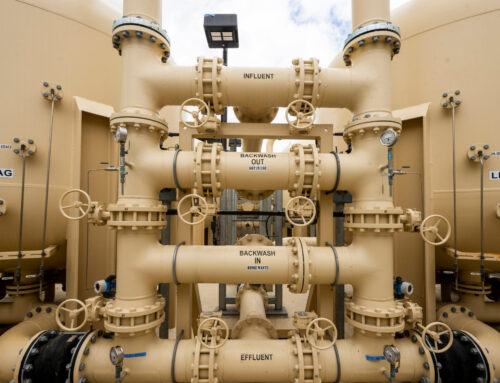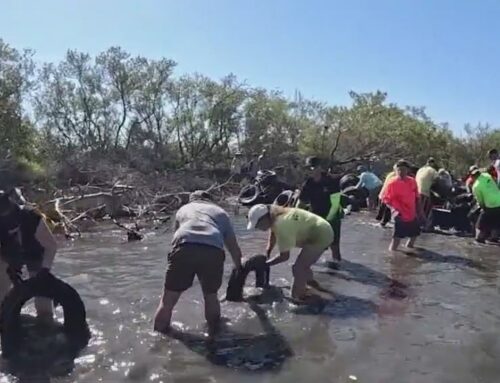More Americans Think U.S. Doing Too Little on Environment
April 17, 2025
WASHINGTON, D.C. — Nearly six in 10 Americans, 57%, think the U.S. government is doing too little to protect the environment. This is up from 50% a year ago and the highest since a 61% reading in 2020. Another 30% of U.S. adults say the government is doing “about the right amount” and 11% “too much” to protect the environment.
These attitudes come as majorities of Americans continue to rate the environment as subpar (55%) and say it is getting worse (62%).
Americans Consistently Say U.S. Government Not Doing Enough on Environment
Over three decades of measurement, the largest share of Americans has always said the government is doing too little to protect the environment, while a smaller share think it is doing about the right amount and relatively few believe it is doing too much.
Americans have generally been more likely to say the government is doing too little to protect the environment during Republican than Democratic presidencies. The figure has exceeded 60% in five measurements — all during Republican administrations — 1992, 2006, and 2018 through 2020. The lowest readings, all below 50%, were recorded during Barack Obama’s administration in 2010, 2011, and 2013 through 2015.
###Embeddable###
The latest findings are based on Gallup’s annual Environment poll, conducted March 3-16, as Donald Trump’s administration rolls back environmental regulations and climate rules put in place by Joe Biden’s administration. The poll also finds that 63% of U.S. adults personally worry about global warming or climate change.
Partisanship Continues to Drive Environmental Attitudes
The percentage of Democrats saying the government is doing too little on the environment has increased from 70% to 91% over the past year. More independents (61%) than a year ago (52%) hold this view, while fewer Republicans do (22%, down from 28%).
These shifts are consistent with Gallup findings since 2001, which show concern about environmental action intensifies among Democrats during Republican administrations and tends to ease under Democratic presidents, though at levels still above the majority.
###Embeddable###
At the same time, 19% of Republicans this year say the government is doing too much, nearly twice the national average, compared with 3% of Democrats. More than half (59%) of Republicans say the government is doing the right amount to protect the environment.
Majority of Americans View Environmental Quality as Subpar
Americans offer largely lukewarm ratings of the overall quality of the environment, with 43% describing it as “excellent” (9%) or “good” (34%), 40% as “only fair” and 15% as “poor.” Americans’ evaluations have held relatively steady in recent years.
###Embeddable###
Majorities of Republicans have rated the quality of the environment positively since Gallup’s first reading in 2001, compared with no more than 48% of independents and 42% of Democrats.
The latest poll finds 68% of Republicans, 44% of independents and 18% of Democrats, describing environmental quality as excellent or good. Democrats’ positive rating has dropped 18 points since 2024, while those among Republicans and independents have risen nine and seven points, respectively.
Democrats’ most positive environmental quality ratings were measured during the Obama administration, while their worst have come during Trump’s first and second terms.
###Embeddable###
More Than Six in 10 Say Environment Is Getting Worse
Americans have grown slightly more pessimistic about the environment since last year, as 62% say its quality is getting worse, up five points from last year. Meanwhile, 32% of Americans think it is getting better.
Since 2001, when Gallup first tracked views on this question, U.S. adults have always been more likely to say the environment is getting worse, though the margins were fairly narrow between 2009 and 2015 and again in 2021.
###Embeddable###
Views on this question are also driven primarily by partisanship, with 65% of Republicans, 26% of independents and 5% of Democrats saying the environment’s quality is improving. This represents a dramatic difference compared with 2024, when, in the final year of the Biden administration, 43% of Democrats and 35% of Republicans felt environmental conditions were improving in the country.
The latest reading among Democrats is the lowest on record by four points, while Republicans’ is the highest by two points. For their part, independents’ view that environmental quality is getting better is not significantly different from last year and was lower between 2005 and 2008 before surging at the start of Obama’s first term.
###Embeddable###
Bottom Line
Americans’ attitudes about environmental quality and protection have been persistently negative over the past 25 years, and their outlook for the environment and desire for more government protection have slipped again this year. Such shifts have been common under Republican presidents when compared with Democratic presidents, likely reflecting the Democratic Party’s greater concern for, and attention to, matters of environmental protection.
To stay up to date with the latest Gallup News insights and updates, follow us on X @Gallup.
Learn more about how the Gallup Poll Social Series works.
View complete question responses and trends (PDF download).
###Embeddable###
Survey Methods
Results for this Gallup poll are based on telephone interviews conducted by ReconMR March 3-16, 2025, with a random sample of 1,002 adults, aged 18 and older, living in all 50 U.S. states and the District of Columbia. For results based on the total sample of national adults, the margin of sampling error is ±4 percentage points at the 95% confidence level. All reported margins of sampling error include computed design effects for weighting.
Each sample of national adults includes a minimum quota of 80% cellphone respondents and 20% landline respondents, with additional minimum quotas by time zone within region. Landline and cellular telephone numbers are selected using random-digit-dial methods.
Gallup weighted the obtained samples to correct for unequal probability of inclusion and nonresponse. Probability of inclusion adjustments were made for number of adults in the household and cellphone and landline ownership to match targets based on the most recent National Health Interview Survey. Nonresponse adjustments were made by adjusting the sample to match the most recent Gallup poll figures for party affiliation and the most recent U.S. Current Population Survey figures for gender, age, race, Hispanic ethnicity, education and region.
In addition to sampling error, question wording and practical difficulties in conducting surveys can introduce error or bias into the findings of public opinion polls.
Search
RECENT PRESS RELEASES
Related Post




